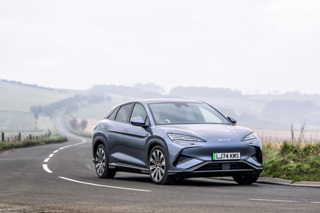By Emily Hardy, road safety expert at Brigade Electronics UK
A recent report estimates that sales of electric bicycles are set to grow to $21 billion by 2024. As the popularity of electric bicycles and electric scooters grows, the potential for road traffic collisions increases.
So how can operators of HGVs and other large vehicles ensure they are helping to protect vulnerable road users?
Electric bicycles, or e-bikes, are fast becoming commonplace on streets across the country with a recent survey revealing that 65% of riders choosing to replace car trips as their primary reason for investing in an e-bike.
As well as the associated health benefits for riders, e-bikes are environmentally friendly, economical and allow cyclists to carry equipment and tackle steep hills with ease.
This offers a real advantage to people with physical limitations and the elderly, who might struggle to use traditional push bikes. However, as the popularity of e-bikes and electric scooters has grown so has the potential for road traffic collisions – particularly in built-up areas and on congested city streets.
In England, Scotland and Wales, currently anyone over the age of 14 can ride an electric bike, as long as it meets certain requirements. According to RoSPA (The Royal Society for the Prevention of Accidents), there are approximately 50,000 e-bikes sold
In the UK annually. Additionally, electric scooters, which can reach speeds of up to 50km/h, are available for hire in more than 100 cities across the world, and are starting to gain in popularity in the UK – despite being banned from public roads, cycle lanes and pavements.
Just days after Mike Brown, London’s transport chief, called for a review into the safety of e-scooters, a woman in her 30s was killed in Battersea when her scooter collided with a lorry.
As with other vulnerable road users, riders of e-bikes and scooters aren’t always easily visible to drivers of large vehicles.
Complex blind spots on HGVs, along with poor visibility due to bad weather conditions, are a major contributing factor to collisions and are often the main reasons why pedestrians and cyclists are killed or injured.
Safety for larger vehicles has dramatically improved in recent years, with many operators opting to invest in stringent safety procedures, including fitting vehicle safety systems to eliminate vehicle blind spots.
The introduction of the Direct Vision Standard, which comes into effect in London in October 2019, is also aiming to reduce deaths caused by HGV blind spots – albeit for now this will only apply to vehicles weighing more than 12 tonnes GVW that enter or operate in Greater London.

However, as roads get busier and e-bikes start to gain in popularity, operators will need to review these systems to ensure they are doing everything they can to eliminate blind spots and prevent collisions.
While large mirrors have traditionally been used, they cannot completely eliminate blind spots.
Research has shown that in the time it takes to scan four mirrors, assess and then react to hazards, a vehicle could travel as far as 10 metres.
However, camera safety systems fitted to the vehicle can eliminate blind spots by providing a complete view of the surrounding area in one image, which the driver can see on a screen inside the vehicle.
Simple reversing alarms have long been a solution to alerting those on the ground, but research has shown that old-fashioned tonal alarms may be adding to the problem as pedestrians and cyclists cannot always locate the direction from which the alarm originates.
Multi-frequency alarms are solving this problem. Rather than the traditional ‘beep beep’ of tonal alarms, they create a ‘ssh-ssh’ sound which is gentle on the ear and dissipates quickly, meaning the alarm can be instantly located and heard only in the danger zone.
While technology is a step towards preventing deaths and solving safety issues, operators need to be mindful that relying on safety systems will not completely solve the problem.
Operators should also be committed to implementing robust procedures, regular training and reviews to assist drivers - only then will roads be safer for everyone.



















Login to comment
Comments
No comments have been made yet.